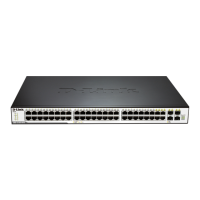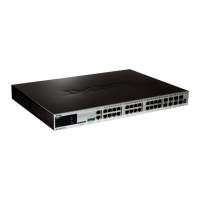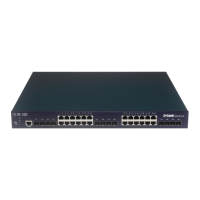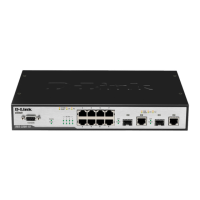xStack® DES-3528/DES-3552 Series Layer 2 Managed Stackable Fast Ethernet Switch Web UI Reference Guide
254
Figure 8-47 Compound Authentication Settings window
The fields that can be configured are described below:
Parameter Description
Authorization Network State
Click the radio buttons to enable of disable the Authorization Network State.
Authentication Server
Failover
Click the radio buttons to configure the authentication server failover function.
Block (default setting) - The client is always regarded as un-authenticated.
Local - The Switch will resort to using the local database to authenticate the
client if RADIUS server cannot be reached. If the client fails on local
authentication, the client is regarded as un-authenticated, otherwise, it
authenticated.
Permit - The client is always regarded as authenticated. If guest VLAN is
enabled, clients will stay on the guest VLAN, otherwise, they will stay on the
original VLAN.
Unit
Select the unit to configure.
From Port
Use this drop-down menu to select the beginning port of a range of ports to be
enabled as compound authentication ports.
To Port
Use this drop-down menu to select the ending port of a range of ports to be
enabled as compound authentication ports.
Security Mode
The compound authentication method options include: None, Any (MAC,
802.1X or WAC/JWAC), 802.1X+IMPB, IMPB+JWAC, IMPB+WAC, and
MBA+IMPB.
None - all compound authentication methods are disabled.
Any (MAC, 802.1X or WAC) - if any of the authentication methods pass, then
access will be granted. In this mode, MAC, 802.1X and WAC/JWAC can be
enabled on a port at the same time. In Any (MAC, 802.1X or WAC/JWAC)
mode, whether an individual security module is active on a port depends on its
system state. As system states of WAC and JWAC are mutually exclusive, only
one of them will be active on a port at the same time.
802.1X+IMPB - 802.1X will be verified first, and then IMPB will be verified. Both
authentication methods need to be passed.
IMPB+JWAC - IMPB will be verified first, and then JWAC will be verified. Both
authentication methods need to be passed.
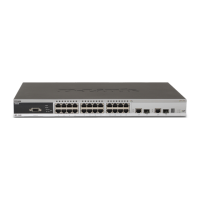
